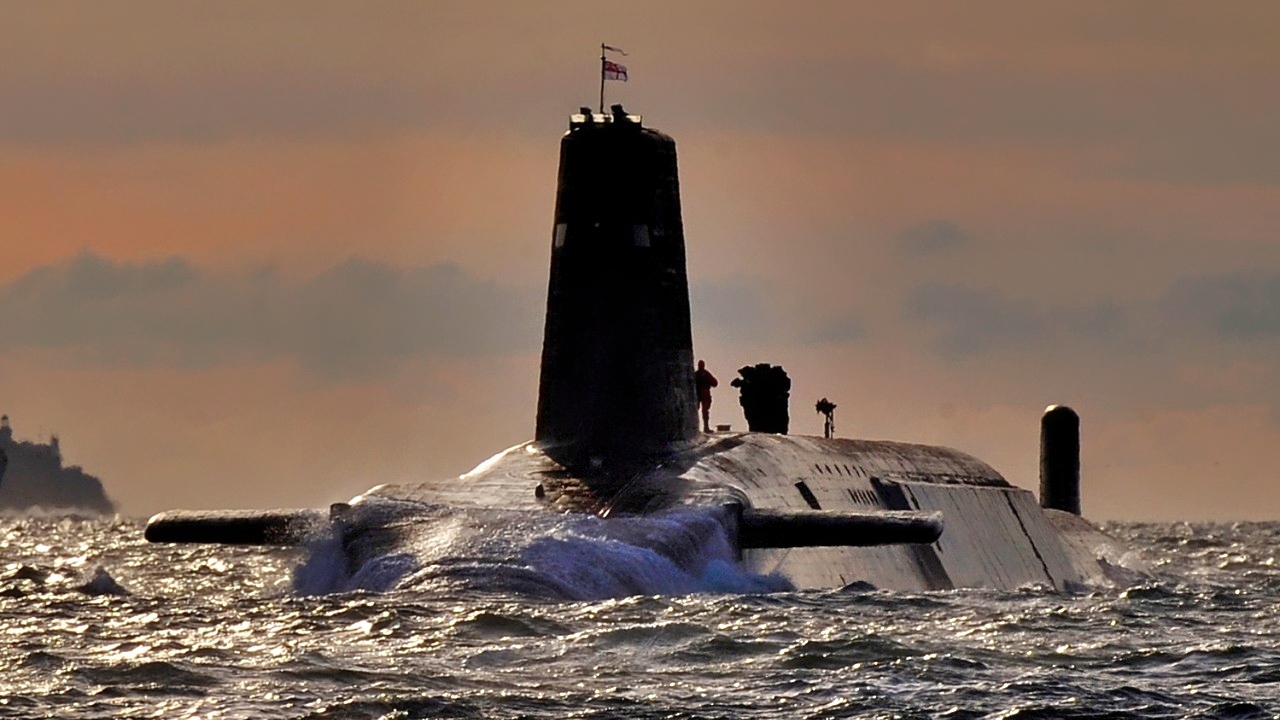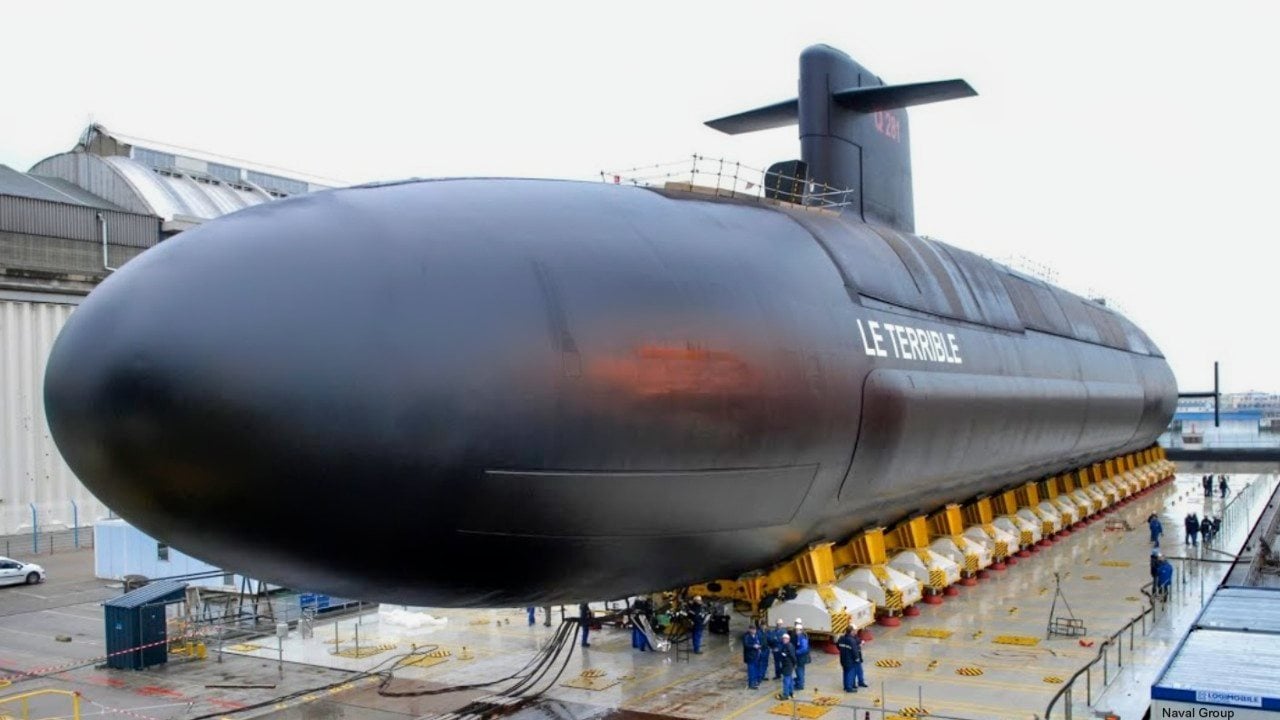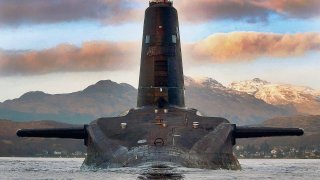Sir, We Hit Nuclear Missile Submarine: How 2 NATO Ballistic Missile Subs Collided
In 2009, a potentially catastrophic incident occurred when the United Kingdom's HMS Vanguard and France's Le Triomphant, both nuclear-armed ballistic missile submarines, collided deep beneath the Atlantic Ocean.
What You Need to Know: In 2009, a potentially catastrophic incident occurred when the United Kingdom's HMS Vanguard and France's Le Triomphant, both nuclear-armed ballistic missile submarines, collided deep beneath the Atlantic Ocean.

-Initially kept under wraps, the collision happened during routine patrols and was downplayed by both nations. HMS Vanguard sustained visible damage to its starboard side and missile compartment, while Le Triomphant's sonar dome and conning tower were affected.
-Although no nuclear leaks or radiation were reported, the incident highlighted the risks associated with deploying nuclear-powered vessels. The collision raised concerns about naval communication protocols and the potential dangers of nuclear submarines operating undetected in close proximity.
HMS Vanguard and Le Triomphant Submarine Collision
In a nightmare scenario, two nuclear-armed submarines collided deep beneath the Atlantic Ocean in 2009. The United Kingdom’s HMS Vanguard and France’s Le Triomphant both represented key components of their respective nations’ nuclear deterrent forces when the incident occurred. While neither ballistic missile submarine reportedly sustained damage in the collision and no radioactivity was reported, this incident highlighted the potential dangers of nuclear leaks.
The Collision
Following the collision, Britain’s Ministry of Defense initially played it down. Eventually, the UK’s Admiral Sir Jonathon Band disclosed to the public that two submerged submarines, one French, one British, were, "conducting routine national patrols in the Atlantic Ocean,” he said. “[They] came into contact at very low speed ... nuclear safety had not been compromised.” The French government alternatively failed to disclose any details to its citizens. In fact, France’s defense ministry simply released a statement detailing that the Le Triomphant “collided with an immersed object, likely a shipping container,” on its journey home.
When the HMS Vanguard returned to its home base in Scotland shortly after the collision, the submarine appeared to have visible damage on its starboard side and near its missile compartment. A whistleblower who had previously served in the UK’s nuclear submarine program later claimed that, “The French submarine had taken a massive chunk out of the front of HMS Vanguard and grazed down the side of the boat.
The High-Pressured Air (HPA) bottle groups were hanging off and banging against the pressure hull. They had to return to base port slowly, because if one of HPA bottle groups exploded it would've created a chain reaction and sent the submarine plummeting to the bottom.”
The French also admitted to some damage occurring to the Le Triomphant because of the incident. Official statements revealed that damage was confined to the submarine’s Thales active sonar dome, but local news outlets later reported that the ship’s conning tower and the starboard sail plane attached to it were also damaged in the collision.

Potential Nuclear Leaks?
France’s Le Triomphant served as part of the nation’s nuclear deterrent strike force. Like her sister ships, the French submarine was powered by a single K15 pressurized water nuclear reactor turboreductor system and electric motor. Weapons wise, Le Triomphant could carry EAN L5 Mod 3 dual-purpose torpedoes or surface-to-surface carried in a mixed load. The UK’s Vanguard-class ballistic missile submarines similarly function as the country’s premiere nuclear deterrent.
HMS Vanguard, like her sister ships, features U.S.-made Trident missiles, which can be fired upon targets up to 4,000 miles away. Additionally, the Vanguard nuclear powered submarines (SSBNs) can carry Spearfish heavyweight torpedoes. Clearly, both Le Triomphant and HMS Vanguard are absolute powerhouses when it comes to payload.
If the submarine collision was more damaging, the Trident II missiles and M45 ballistic missiles carried on board the HMS Vanguard and Le Triomphant respectively could have been lost. Worse, the nuclear reactors powering the two ships could have leaked nuclear materials beneath the ocean’s surface.
About the Author: Maya Carlin
Maya Carlin, National Security Writer with The National Interest, is an analyst with the Center for Security Policy and a former Anna Sobol Levy Fellow at IDC Herzliya in Israel. She has by-lines in many publications, including The National Interest, Jerusalem Post, and Times of Israel. You can follow her on Twitter: @MayaCarlin.
Image Credit: Creative Commons and/or Shutterstock.


